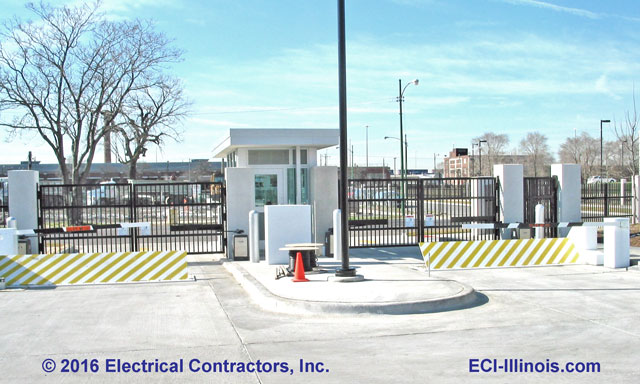About Wedge Barriers
Wiki Article
Not known Details About Wedge Barriers


The spring rod 58 is coupled to a webcam(e. g., camera 80 shown in FIG. 4) of the lifting system 50. The springs 60 disposed concerning the spring pole 58 are held in compression by spring sustains 62, consisting of a dealt with springtime support 64. That is, the set springtime assistance 64 is dealt with relative to the foundation 14 and the rest of the bather 10.
What Does Wedge Barriers Do?
The continuing to be force applied to the cam camera deploy release wedge plate 16 may might provided by an electromechanical actuator 84 or other various other. The springtime setting up 54 and the actuator 84(e. Wedge Barriers. g., electromechanical actuator)may operate together to equate the camera and raise the wedge plate best site 16.
As discussed over, the springtime assembly 54 exerts a continuous pressure on the camera, while the electromechanical actuator might be controlled to exert a variable force on the cam, thus allowing the training and reducing( i. e., deploying and pulling back )of the wedge plate 16. In specific personifications, the consistent pressure used by the springtime setting up 54 might be flexible. g., electromechanical actuator) is impaired. As will be appreciated, the springtime setting up 54 may be covered and safeguarded from particles or various other aspects by a cover plate(e. g., cover plate 68 revealed in FIG. 4) that may be considerably flush with the raised surface area 38 of the structure 14. As pointed out over, in the released setting, the wedge plate 16 serves to block access or travel beyond the obstacle 10. For instance, the obstacle 10(e. g., the wedge plate 16 )may block pedestrians or automobiles from accessing a building or path. As discussed above, the barrier 10 is affixed to the anchor 30 protected within the foundation 14,

front brackets 71. Therefore, the linkage settings up 72 may pivot and turn to allow the collapse and expansion of the linkage settings up 72 during retraction and release of the bather 10. The affiliation settings up 72 reason activity of read the wedge plate 16 to be limited. If an automobile is taking a trip in the direction of the released wedge plate 16(e. For instance, in one condition, the safety and Visit This Link security legs 86 might be prolonged duringmaintenance of the barrier 10. When the safety legs 86 are deployed, the safety and security legs 86 sustain the weight of the wedge plate 16 versus the surface 12. Consequently, the training system 50 may be shut off, serviced, removed, changed, etc. FIG. 5 is partial perspective view of a personification of the surface-mounted wedge-style obstacle 10, highlighting the camera 80 and the camera surface areas 82 of the lifting device 50. Specifically, two web cam surface areas 82, which are referred to as reduced camera surface areas 83, are positioned below the web cam 80. The reduced webcam surfaces 83 may be dealt with to the surface area 12 (e. As an example, the lower web cam surfaces 83 and the installing plate 85 may create a solitary piece that is safeguarded to the support 30 by bolts or various other mechanical fasteners. In addition, two cam surface areas 82, which are referred to as top webcam surface areas 87, are positioned over the webcam 80 and coupled to (e. In various other embodiments, interfering layers or plates may be placed in between the surface 12 and the reduced camera surfaces 83 and/or the wedge plate 16 and the upper webcam surfaces 87 As discussed over, the camera 80 equates along the camera surface areas 82 when the wedge plate 16 is lifted from the retracted placement to the deployed position. Additionally, as discussed over, the springtime assembly 54 (see FIG. 3 )might offer a pressure acting on the camera 80 in the direction 102 by means of spring rod 58, which may lower the force the electromechanical actuator 84 is needed to apply to the camera 80 in order to actuate and raise the wedge plate 16. 1 )to the deployed placement(see FIG. 4). As shown, the web cam 80 includes track wheels 104(e. g., rollers), which call and equate along the web cam surfaces 82 during operation.
Report this wiki page